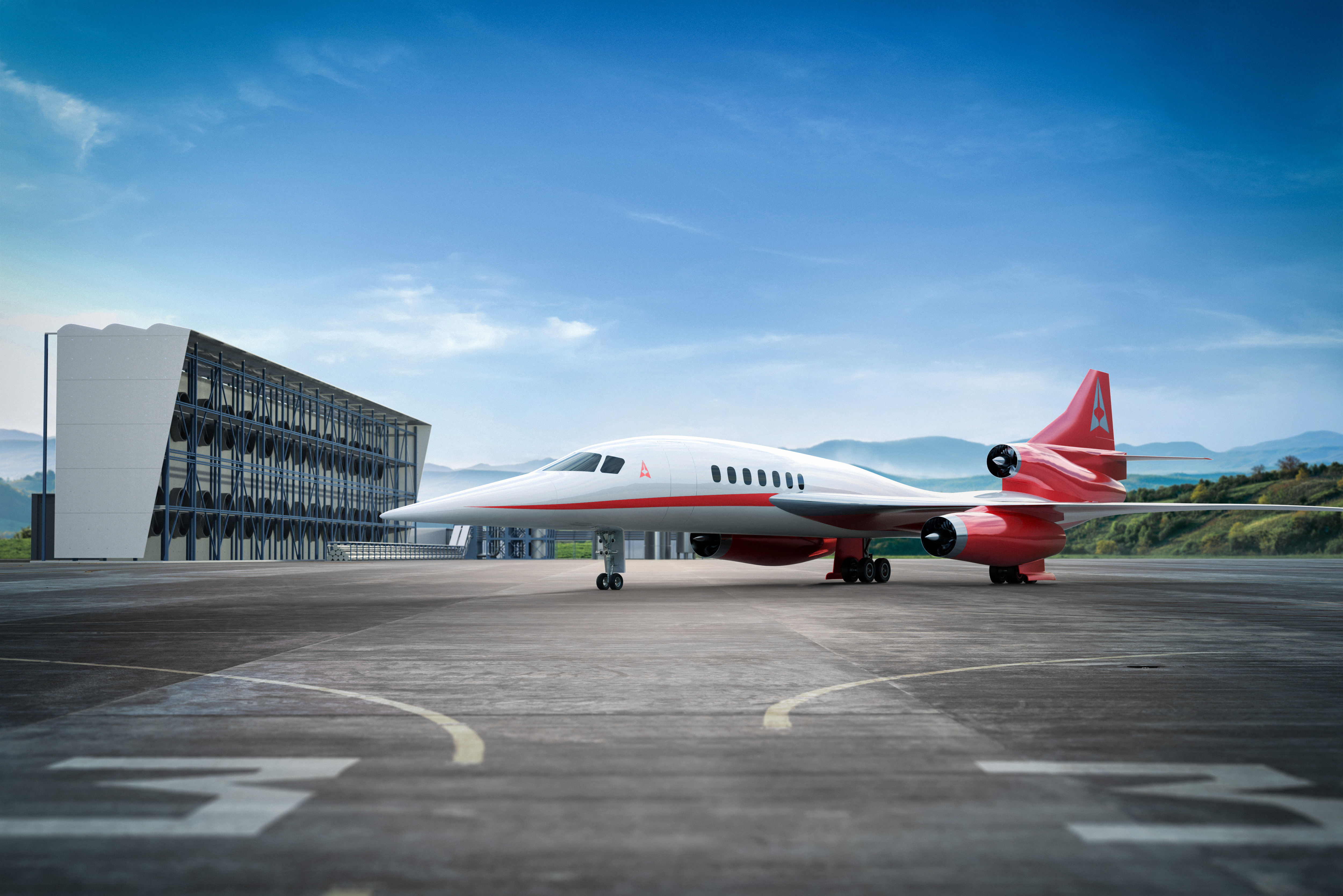How carbon-sucking machines could cut aviation emissions

Two companies have teamed up on a project that could provide a key test of our ability to use synthetic fuel, made from carbon dioxide captured from the air, to cut emissions from aviation.
Carbon Engineering, a direct air capture company based in British Columbia, has signed a deal with Aerion, a startup based in Reno, Nevada, that is developing a supersonic business jet known as the AS2, to evaluate whether fuel derived from CO2-sucking machines can enable carbon-neutral commercial flights.
So what? The collaboration is important for two main reasons. First, it points to a potential business model that could support companies working on direct air capture, helping to scale up and drive down the costs of a process that may prove crucial for reducing atmospheric carbon dioxide.
Second, the partnership will evaluate our ability to reduce emissions from airplanes and other sources through the use of synthetic fuels, a technology that’s further along than the sort of next-generation batteries required to fully electrify airlines. Commercial air travel produces about 2.5% of global emissions, and it’s one of the technically trickiest sectors to clean up.
Challenges: The chemistry required to produce synthetic fuels, which entails combining hydrogen with carbon dioxide, is fairly straight forward. But the trick will be to do it in a way that’s relatively affordable and doesn’t produce significant emissions. That will require using electricity from renewables to run the direct air capture plant and to split water to produce a clean form of hydrogen.
Additional questions include whether Carbon Engineering can produce fuels with the energy density required to entirely power a supersonic flight, and how much more expensive they’ll be than conventional fuels.
Bottom line: In the end, the flights would still produce emissions, as may parts of the carbon capture or synthetic fuel production and distribution process. But if the math works out, it would all be equivalent to the amount of carbon dioxide that Carbon Engineering removed at the start—meaning the flights wouldn’t add emissions to the atmosphere.
Deep Dive
Climate change and energy
The problem with plug-in hybrids? Their drivers.
Plug-in hybrids are often sold as a transition to EVs, but new data from Europe shows we’re still underestimating the emissions they produce.
Harvard has halted its long-planned atmospheric geoengineering experiment
The decision follows years of controversy and the departure of one of the program’s key researchers.
Decarbonizing production of energy is a quick win
Clean technologies, including carbon management platforms, enable the global energy industry to play a crucial role in the transition to net zero.
How thermal batteries are heating up energy storage
The systems, which can store clean energy as heat, were chosen by readers as the 11th Breakthrough Technology of 2024.
Stay connected
Get the latest updates from
MIT Technology Review
Discover special offers, top stories, upcoming events, and more.